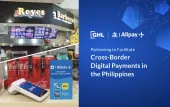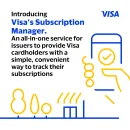The Next Pedestal of the Payments War for Banks and FIs: Buy Now Pay Later
By Ching-Fong Ong and Sumit KumarBuy Now Pay Later (BNPL) has seen remarkable growth in recent years and is on track to achieve a global market value of US$700b by 2023. This 90% compound annual growth rate (CAGR) reflects the growing penetration of this simple transactional instrument—consumers purchasing a product now with the agreement to pay for it later.
There have been significant moves in this space in recent years, with major BNPL provider Klarna recently valued at over US$45b, Australia’s Afterpay purchased for US$29b by Square, and major FinTech firm PayPal also entering the space. BNPL is expected to represent 12% of all e-commerce sales across Asia Pacific (APAC), North America, Europe, and Australia by 2023, up from 2% today. 80% of all BNPL transactions will be completed online in mature markets, with a doubling of growth for in-store BNPL purchases. With low penetration today due to lack of customer awareness and limited availability of financial providers, APAC is expected to be the next growth story with a remarkable 145% CAGR projected to 2023. Banks are being left behind by fast-moving FinTechs, and it’s critical they prepare for the second war on payments—BNPL.
Buying in to BNPL in Southeast Asia
The region’s retail sales market is expected to expand from US$374b to US$457b by 2023, with online sales increasing 44% annually to represent 20% of total sales by 2023.
With attractive market demographics and early signs of accelerating adoption it’s expected that Southeast Asia’s addressable market will be as high as US$27b by 2023, with a projected BNPL net revenue of ~US$1.5b. Market penetration of 6% is projected to be double that of the wider APAC region. In countries like Indonesia, surveys show a whopping 78% of respondents expressed familiarity with BNPL and its advantages.
Funding in Southeast Asia is already outpacing APAC, driven by investments in Singapore and Indonesia. Southeast Asian BNPL FinTech companies attracted 30% of total APAC BNPL funding between 2016-2020, 10% of the global total. That investor confidence is seen in companies such as Akulaku, FinAccel, and Redivo.
Mature BNPL markets such as Australia offer valuable insight into Southeast Asia’s potential. Rapid market growth has seen an estimated 20% of Australians using BNPL, and approximately 60% of merchants offering the service.
Australia’s demographics also reveal positive signs for Southeast Asia, with high usage in younger groups. Key categories include fashion and travel, and while consumers with low FICO scores dominate, users display a broad mix of credit worthiness.
The regional landscape is relatively fresh in Southeast Asia, but FinTechs such as Atome and Hoolah are expanding to target both offline and online merchants, enjoying rapid growth in transaction values. Open ecosystem players such as Akulaku and a Traveloka-Bank BRI partnership are exploiting BNPL services as part of evolving ecosystem offers. E-commerce players like Shopee are introducing BNPL as part of standard features. Meanwhile, credit card companies and banks are exploring partnerships with winners from other markets such as Pine Labs.
Key areas of BNPL to watch
Establishing the right model will require a strategy that reflects the local landscape and rapidly evolving market conditions.
While online space is critical, e-commerce players are expected to dominate this area with closed-loop solutions. Offline sales still represent the majority of sales volume, thus scaling together with offline merchants is key. Challenges such as integration hurdles, secure customer information, educating customers in-store, and maintaining positive user experience during lengthy application processes must also be overcome.
Regulation is also likely to tighten, as early plays by technology companies increasingly come under the review of financial authorities. Consumer groups in Europe and Australia are already pushing for greater oversight of unregulated BNPL lenders around AML, KYC checks and fraud protection.
In addition, BNPL players will have to develop sustainable methods for revenue generation—while merchant-linked fees are a good way to start, we believe such fees will reduce over time. Players need to build consumer financing leveraging BNPL transaction data, coupled with value-added services such as advertising or bill payments, for a long-term model.
The success of BNPL in India offers some interesting lessons on this evolution, with four broad operating models emerging in the market.
Pureplay FinTech players such as Zest are targeting underbanked segments, serving customers without credit cards with rapid-turnaround approvals. Customers opt in at online or offline checkout pages, with credit risk analysis undertaken by lending partners.
Closed-loop ecosystem players such as Flipkart and Myntra offer BNPL within an existing customer ecosystem, often supported through credit risk analysis by third-party FinTech players. Consumers opt in to BNPL through the in-ecosystem checkout page. Point-of-sale (POS) aggregators such as Pine Labs leverage in-store POS systems to drive BNPL growth. Pine Labs operates on over 450,000 POS systems across 150,000 merchants, backed by 35 banking partners. Customers can conveniently sign up to BNPL at the point-of-sale, with credit risk undertaken by partner banks.
Banks such as ICICI Bank and HDFC Bank offer pre-approved BNPL based on transaction history, with consumers able to opt in via online checkout pages. Pay later amounts are automatically deducted from savings on an agreed schedule.
Key Learnings for Banks and FIs
While banks started this journey early with interest-free loan products, they’ve failed to capitalise on this head start, facing cultural barriers around attitude to risk, reluctance to transition, slow innovation pathways, and poor engagement with key market segments such as millennials.
This failure to corner the market means BNPL share remains open for acquisition. As banks and financial institutions consider the path to success they should focus on seven key factors.
- Addressing the underserved. Embrace underserved segments with limited credit history, minimal banking exposure, and smaller merchants.
- Keep it simple. Leverage simple value propositions and user-friendly products.
- Leverage data. Use new data sources and credit risk assessments to make decisions quickly.
- Flexible online and offline. Integrated solutions for online and offline delivery, such as POS machines, easily integrated across merchants.
- Superior online UX. Deliver user-friendly online signup and product search.
- Move fast. Exploit market gaps and outdated regulations to find market opportunities.
- Add value. Build added value with cross-selling (loans, value-added services, and advertising) beyond BNPL to diversify revenue as margins are squeezed by growing competition.
With Southeast Asia’s potential addressable market growing to US$27b by 2023, backed by extremely attractive demographics and market conditions, BNPL is undoubtedly set to accelerate in the region in coming years. Choosing the right play for each market will require a tailored strategy to suit, but by leveraging the key success factors outlined above, prospective market players could buy into a substantial revenue opportunity.
***
Sumit Kumar is a Managing Director and Partner at Boston Consulting Group; and Ching-Fong (CF) Ong is a Managing Director and Senior Partner, SEA Leader for DigitalBCG at Boston Consulting Group.

















 Advertise
Advertise






